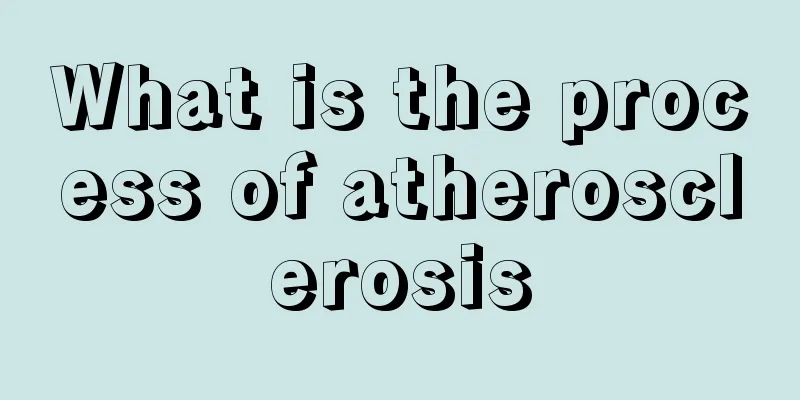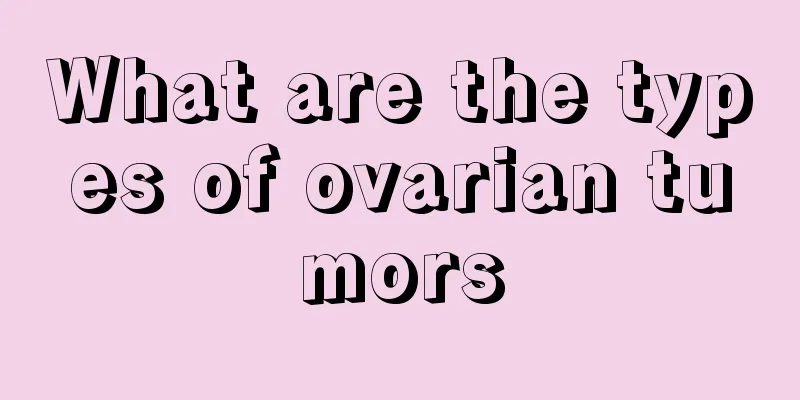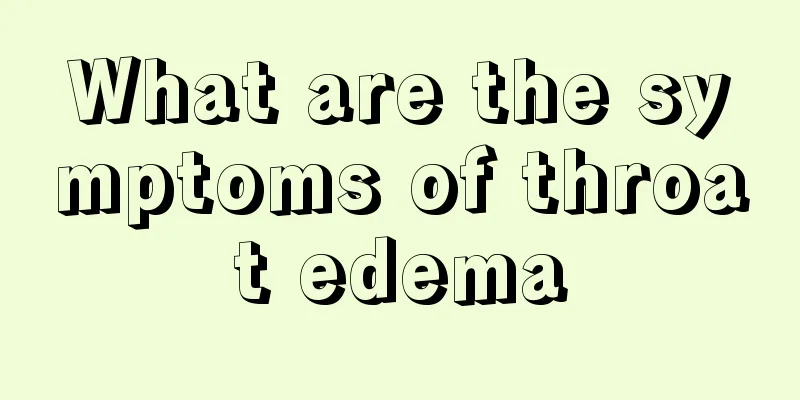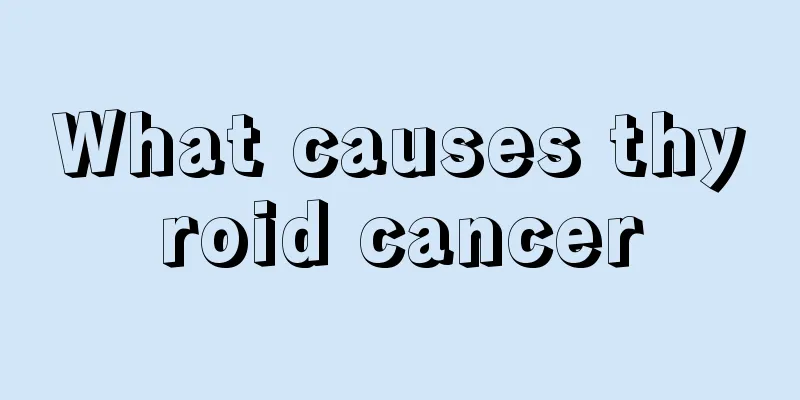How to effectively treat glioma
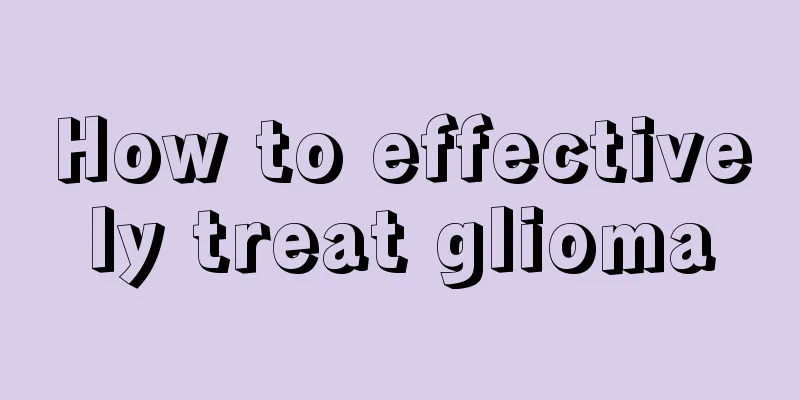
|
Glioma is a relatively harmful brain tumor. Once a glioma is diagnosed, treatment should be started as soon as possible. Since there are many treatments for glioma, patients should receive corresponding treatment according to their own condition. So how can glioma be effectively treated? The following editor will lead you to learn. 1. Surgical treatment: The principle is to remove the tumor as much as possible while preserving neurological function. Early stage tumors that are small should be completely removed. For superficial tumors, the cortex can be cut around the tumor, and for tumors in the white matter, the cortical incision should be made away from important functional areas. When separating the tumor, it should be done at a certain distance from the tumor and in normal brain tissue, not close to the tumor. Especially for relatively benign tumors such as astrocytomas and oligodendrogliomas in the frontal lobe or anterior temporal lobe or cerebellar hemispheres, better therapeutic effects can be achieved. For larger tumors located in the frontal lobe or the front part of the temporal lobe, lobectomy can be performed to remove the tumor together. For those in the frontal lobe, the posterior edge of the incision should be at least 2 cm in front of the anterior central gyrus, and in the dominant hemisphere, the motor language center should be avoided. For those in the temporal lobe, the posterior edge should be before the inferior anastomotic vein, and damage to the lateral fissure vessels should be avoided. A small number of tumors located in the occipital lobe can also be lobectomized, but visual field hemianopia remains. If the frontal lobe or temporal lobe tumor is too extensive to be completely removed, the tumor can be removed as much as possible while the frontal pole can be removed, or internal decompression of the frontal pole can be performed, which can also prolong the recurrence time. 2. Radiotherapy: The radiation sources used for external irradiation include high-voltage X-ray therapy machines, 60Co therapy machines, electron accelerators, etc. The latter two are high-energy rays with strong penetrating power, low skin dose, small bone absorption, and little side scatter. The dose of the accelerator is concentrated at the expected deep part. Beyond this depth, the dose drops sharply, which can protect the normal brain tissue behind the lesion. Radiotherapy should be performed as soon as possible after the general condition recovers after surgery. The irradiation dose is generally 5000-6000cGy for gliomas, which is completed within 5-6 weeks. For those with high sensitivity to large irradiation field radiotherapy, such as medulloblastoma, 4000-5000cGy can be given. The sensitivity of various types of gliomas to radiotherapy varies. It is generally believed that poorly differentiated tumors are more sensitive than well-differentiated ones. Medulloblastoma is the most sensitive to radiotherapy, followed by ependymoblastoma. Glioblastoma multiforme is only moderately sensitive, and astrocytoma, oligodendroglioma, pinealoma, etc. are even worse. For medulloblastoma and ependymoma, because they are easy to spread with cerebrospinal fluid, full spinal canal irradiation should be included. 3. Chemotherapy: Highly lipid-soluble chemotherapy drugs that can pass through the blood-brain barrier are suitable for brain gliomas. In astrocytoma grades III to IV, the blood-brain barrier is damaged due to edema, allowing water-soluble macromolecular drugs to pass through. Therefore, some people believe that the selection of drugs can be expanded to many water-soluble molecules. However, in fact, in the area around the tumor where proliferating cells are dense, the damage to the blood-brain barrier is not serious. Therefore, the drugs selected should still be mainly lipid-soluble. 4. Immunotherapy: Immunotherapy is still in the trial stage, and its efficacy is uncertain and needs further research. 5. Other drug treatments: For malignant glioma, hormone therapy can be given first, with dexamethasone being the most effective. In addition to reducing brain edema, it also has the effect of inhibiting the growth of tumor cells. It can alleviate symptoms, and then surgical treatment can be performed. |
<<: How to completely treat glioma
>>: What is the best way to treat glioma
Recommend
What is the reason for feeling cold all over and how to solve it?
Some friends with poor physical constitution may ...
What's the matter with the dull pain around the belly button
Many people nowadays do not pay much attention to...
Why does the back of the ears stink
Ears are the organs we use to hear sounds. Withou...
After washing your hair with ginger juice
We all know that ginger has the effect of promoti...
Where does colon cancer pain usually occur? Take care of it like this after the pain
Where does the pain of colon cancer usually occur...
Nursing for gallbladder cancer
Patients with gallbladder cancer should pay atten...
Symptoms of ear cyst
If a person finds pimples growing around his ears...
What is the difference between hiking shoes and running shoes
Hiking shoes and running shoes are two types of s...
How long can you live after surgery for advanced colon cancer
Although "early detection, early diagnosis, ...
Is the alpha-fetoprotein level in liver cancer always high? Not necessarily high
Does liver cancer always have high alpha-fetoprot...
Can't finish peeing in one go
It is very common to not be able to finish urinat...
Why does uterine cancer cause fever
In the late stage of endometrial cancer, fever ca...
Is interventional treatment for liver cancer painful? Introduction to interventional treatment for liver cancer
Liver cancer patients will not feel any obvious p...
What object around you has the strongest radiation?
Fish tank water pump: radiation reaches half of t...
What are the benefits of washing your face with milk
Since ancient times, milk has been a pure natural...

